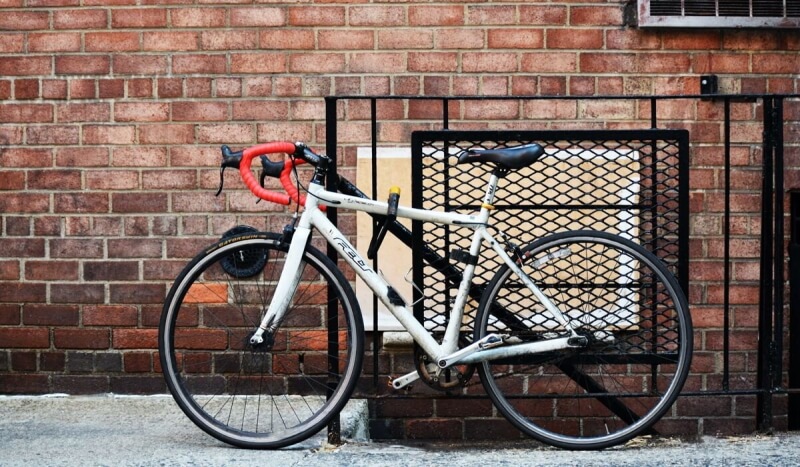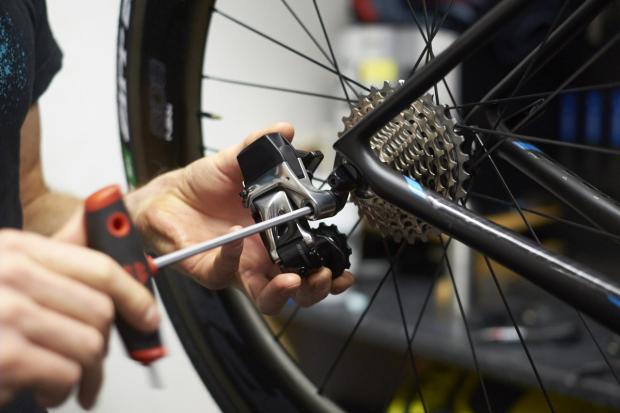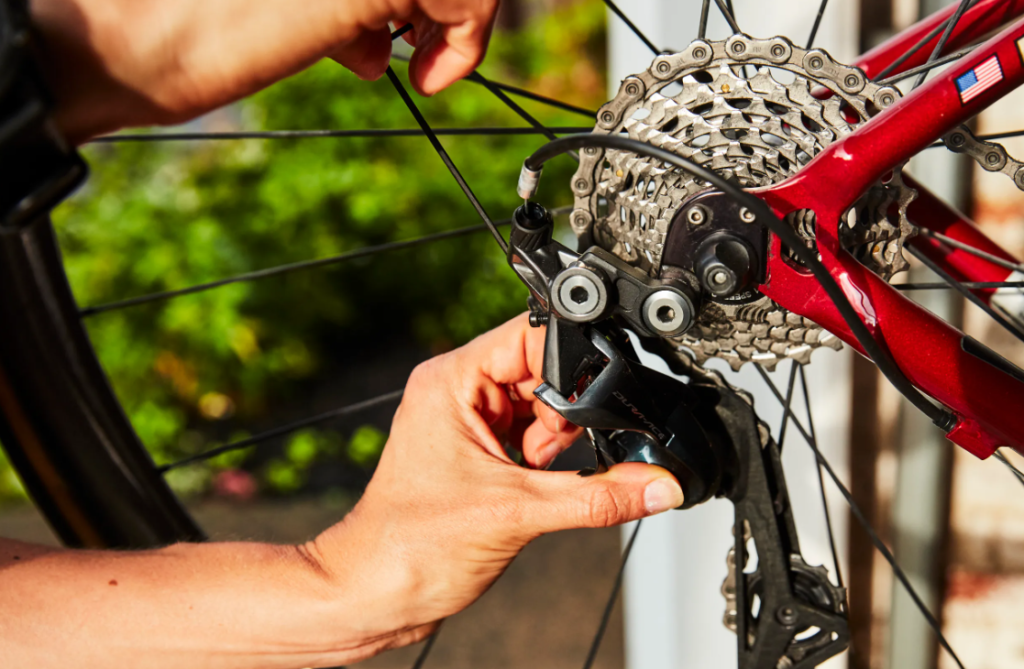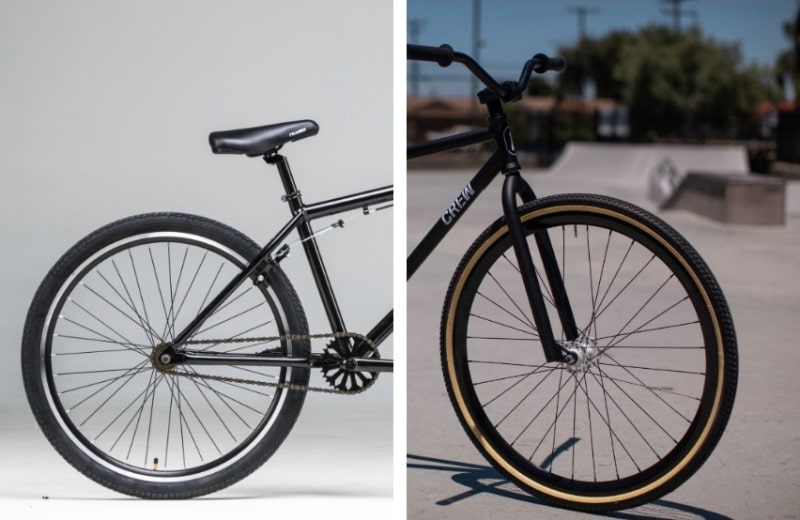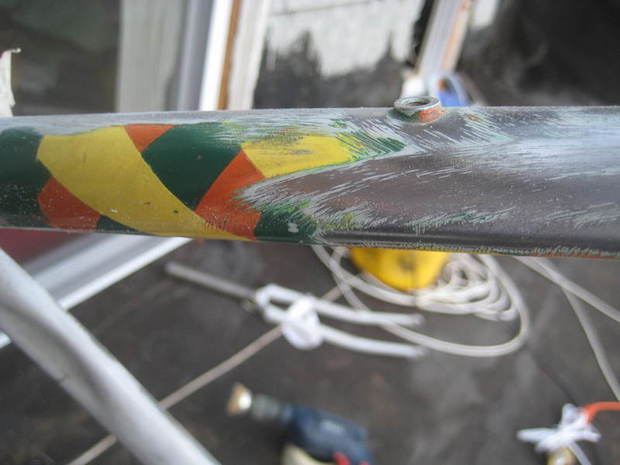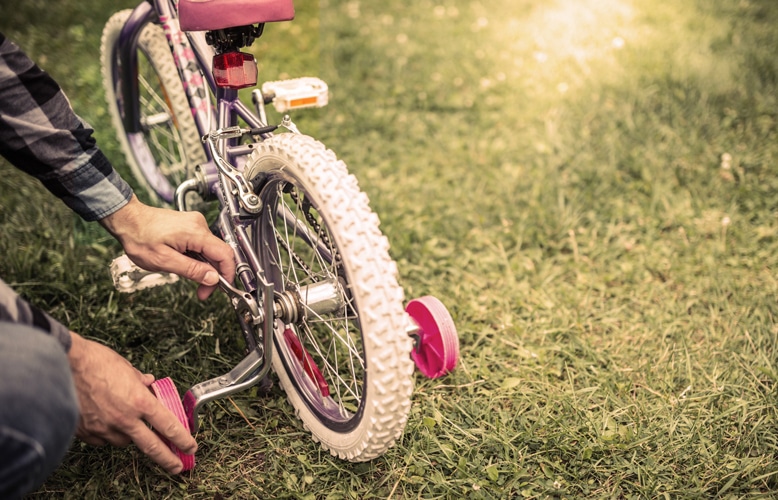- Trails
-
Bikes
-
Gear
-
Tips & Tricks
-
About us


Can women ride men’s bikes? Women’s bodies are designed a bit differently from men’s. Like any other sporting equipment that uses your body and can use your muscles, women appreciate a bike designed for their bodies. The same goes for men and women who have a variety of body shapes and abilities. This article discussed whether women can ride men’s bikes and what is different about bikes made for women. We’ll go into detail about how differences in various bike parts impact men and women differently. Women can indeed ride men’s bikes, but they might not be as comfortable or energy efficient when doing so.
The design of women’s bikes has changed significantly in the last couple of decades. Women’s bikes were somewhat similar to men’s bikes. The problem with women’s bike designs was those bike manufacturers didn’t do much actual research and concluded that women wanted a smaller bike than men, with a different colored design – like pink. The idea of “shrink it and pink it” applied to other categories of women’s products, too, like razors and other things that both men and women use daily. In the case of women’s bikes, manufacturers also put lesser quality parts in women’s bikes, thinking they wouldn’t use them as hard.
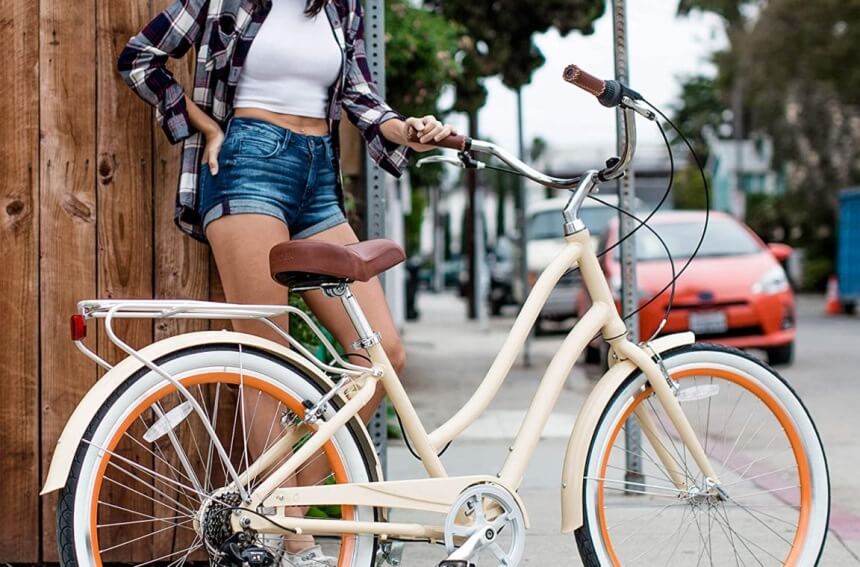
While this may be fairly obvious, the reasoning is that a women’s bike is better built for women, who often have longer legs and a shorter torso than men. Women tend to activate the front thigh muscle more than men while riding, so part of the purpose of designing a bike for women is to take advantage of size and biological differences.
Comfort can be a huge plus for a women’s bike. While women can ride a man’s bike, it’ll likely have bigger wheels, a longer base, and ride a bit higher. This combination of differences can make the bike harder to pedal, less comfortable to sit on and wear her out faster. Every human body is different, of course, and the desire to make bikes more engineered for women also has some disadvantages.
Some manufacturers like Specialized stopped making geometric and frame differences in men’s and women’s bikes. While there are certainly body size and length differences between men and women, there are also size and length differences within genders.
When companies like Specialized collected body measurements, they learned that the biggest real difference customers actually preferred it was actually in the seat position and width. Genital differences between women and men make the seat pretty important – men prefer a wider seat and a more forward position to keep pressure off genitals.
One thing to keep in mind when making a bike for a male body type versus a female body type: while manufacturers can collect thousands of data points about size differences, the actual bike is usually engineered for a general body type. A custom bike can be made to fit a person’s exact frame and preferences, but a single bike found at a bike shop blends the averages of many people.
A competitive, more serious rider will want to push every last ounce of metal, plastic, and muscle in order to get their bike to corner faster and accelerate. Whether a man or a women, this person will be looking at getting a bike built for them will notice the difference between a bike built for the average person and one put together just for them.
The parts that assemble a bike are meant to accommodate women and men differently. We will now go into a bit more detail about the various parts that make up a bike and how they are engineered for genders.
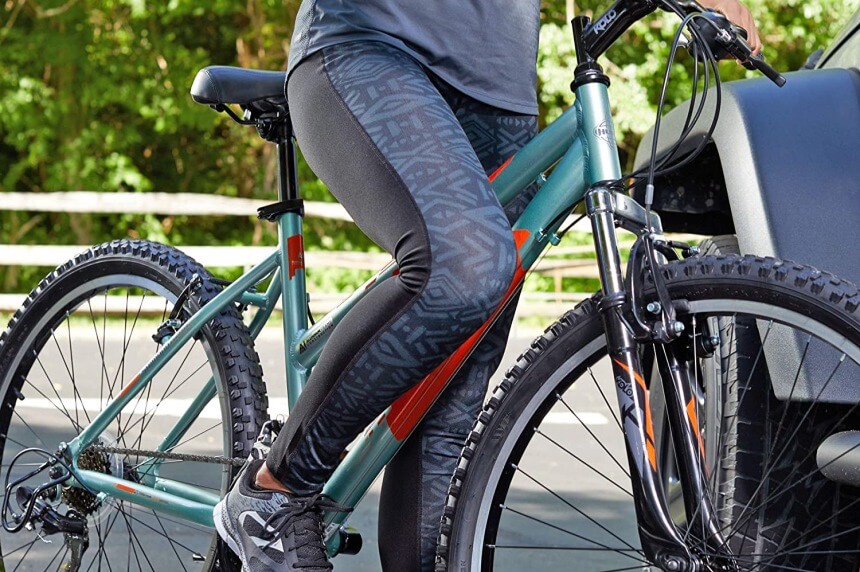
Some women’s bikes have a specific design that minimizes or excludes the top tube and has a downward slope to the top tube, like this bike. These modifications from men’s bikes make it easier for women to get onto the seat without fully stepping over it – she can instead go sideways onto the bike. The downward slope also offers the advantage of letting more loose clothing, like a dress, flow around the bike rather than lifting the material up.
Bike manufacturers also more often have unique size differences amongst women’s bikes, like small, medium, and large, to accommodate a variety of women’s heights. Women tend to have a greater height and size difference than men, and it doesn’t always translate well to inches.
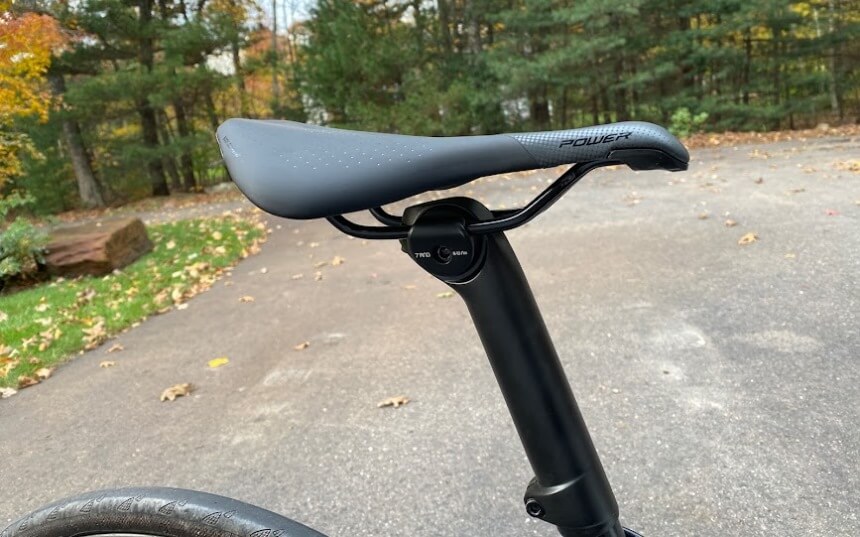
The saddle tends to be easily the most important part difference between a men’s and women’s bike – especially for women. Saddle sizes and positions certainly tend to be unique and a little personal to bike riders. For both men and women, there are few problems worse than having a seat that digs in, chafes, or otherwise irritates one of the most sensitive parts of the body.
One small issue with a women’s normal wider seat is that they are a bit less aerodynamic and more restrictive on high-speed pedaling for competitive racing. Thankfully, most higher-end bikes and even some lower-end women’s bikes have easily replaceable seats. It’s also very easy to go to a bike shop and try out some seats to see which one works best while applying the least pressure to soft tissue.
A major and more recent improvement in saddle and seat technology is creating a groove within the seat. This is more common on men’s seats but also works on women’s seats too. A groove allows a small amount of distance between the butt and the seat, so when more downforce is applied while pedaling faster, the person’s soft tissue absorbs less impact.
In many cases, women have more narrow shoulders than men. This also means that most will need a narrow set of handlebars compared to men to sit and reach forward comfortably.
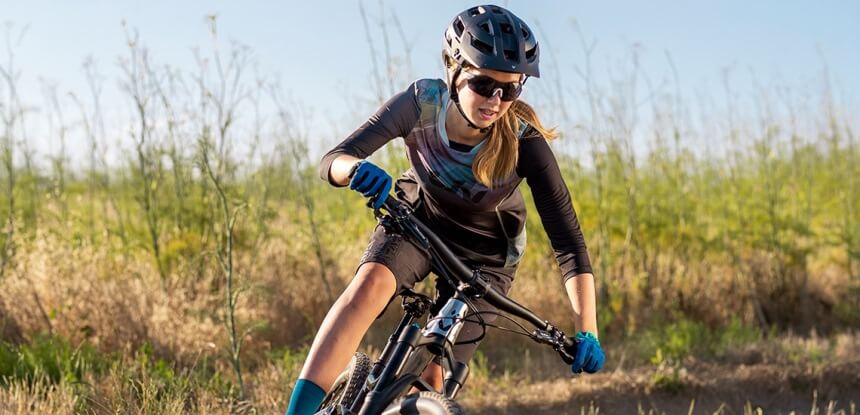
Handlebars are very important for both comfort and control, so having the right width of handlebars is important regardless of gender. The handlebars are a piece of equipment that can make your shoulders sore if spread too wide for too long.
Women also have smaller handlebar grips than men because the hand and finger length is less. Smaller hands attempting to wrap around a larger grip can lead to discomfort because the muscles and tenders are stretched out for a long time, all while pressure is also delivered from the forearms.
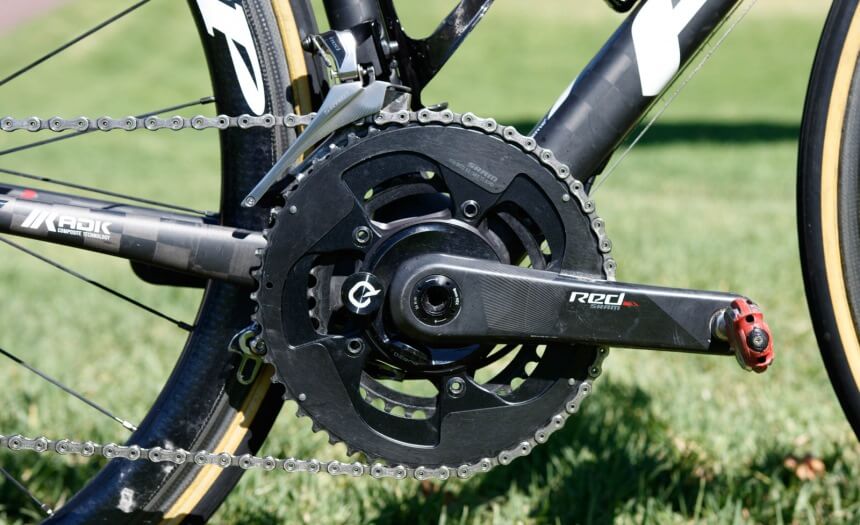
Amongst the challenges of designing a smaller frame for a woman is ensuring that longer legs don’t end up pushing their feet past the pedals and into the front tire.
The cranks on men’s bikes tend to be shorter because of shorter legs, but these are also better accommodated because the overall length of a men’s bike tends to be longer.
Shorter or excessive long cranks result in discomfort or a loss of power. Imagine trying to climb a hill on your bike when you have to adjust your legs every time you push the pedal. Exceedingly long cranks reduce the amount of power you can push down with, so you’ll have to put in more effort to pedal faster and possibly stretch your legs excessively.
To get just the right length for men and women, cranks are also fairly easily replaced. They often just require a wrench and some screws. Head to your local bike shop to find the right length of crank if the ones that came with your bike don’t fit your leg length correctly.
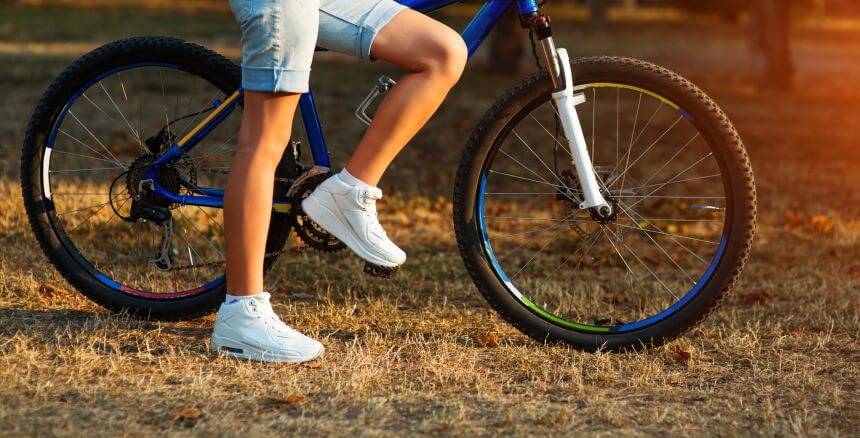
The wheels on women’s bikes Trusted Source How weekly bike rides with a group of supportive women showed me a route to joy | Cycling | The Guardian When Tanya Frank joined a group of ‘joyriders’, she rediscovered her love of cycling and found a caring community. www.theguardian.com also are placed further away to prevent the earlier mentioned issue of a women’s longer legs resulting in kicking her own front tire. Some believe that adding this distance makes the front wheel less stable on a women’s bike.
Bike shops and online vendors make different wheel sizes readily available to bikers who need a change. You’ll also be able to find bike wheel size guides that consider the length of your bike and your legs to fit the right size tire. The right-sized tires are important to maintaining good balance and keeping an efficient ride for your legs.
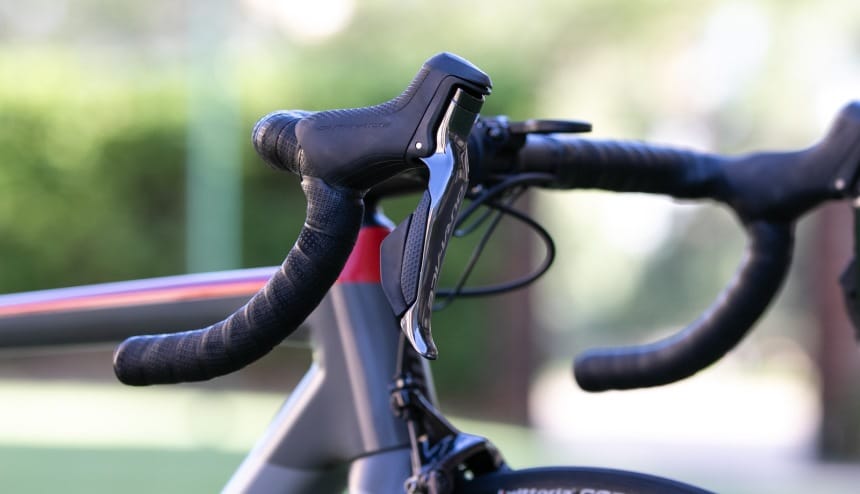
Higher-end brake levers offer an adjustable screw that lets the user make the travel distance shorter, in addition to bringing the brake lever just a bit closer. Shorter arms and smaller hands will probably want this option, as a bike rider doesn’t want to have to worry about getting uncomfortable hands from braking on a hilly ride or not being able to fully engage the brake at the last moment in high-speed situations.
Let’s say a woman wants a good bike Trusted Source Pedals at dawn: an early morning gravel bike ride in the New Forest | Cycling holidays | The Guardian It’s tempting to hibernate at this time of year, but cycling the national park’s off-road trails is the perfect winter tonic. www.theguardian.com but has a men’s bike in her garage and doesn’t want to buy a bike. It’s also not uncommon for women to not entirely fit the idea of having longer legs and a shorter torso.
The majority of bike parts are removable and replaceable. The best part of putting together different parts to making your own bike is that you can make the bike just how you want it. Do you feel like you are reaching too far with your legs to create enough power to go fast? Replace the cranks with something shorter.
The seat is the most common complaint about men and women but can readily be taken off often with a small wrench. The hardest part of a bike to change – if it’s possible at all, is the frame. The frame for a bike can be made out of welded together metal parts or pre-formed carbon tubes. The frame itself affects how long the bike is and how high you’ll set. If a woman has a hard time getting her leg over the frame to sit down, that can be a problem fixed by a women’s bike.
While companies have collected lots of measurements and data about the physical differences between men and women, then made some bike sizes and models based on the information – it all comes down to you.
If you are comfortable riding a unisex or man’s bike and don’t get extra sore with a bike that is not built for your gender, go for it! While a company might offer marketing implying they have bikes built for women, there’s no need to fix a problem you don’t personally have.
Bikes are also made for totally different purposes. A woman who is a road biker might benefit from a better commuter seat. Off-roading or unpaved roads will make your work a little harder, so a bike made for gravel could help. A person who enjoys being out in nature will have a better experience with the suspension of a mountain bike.
Our best suggestion is to find your own measurements or just go try one. Most bike shops let you at least ride a bike around the shop to get a feel for what fits you best. Use that time and experience to see what works for your body. A size chart, like this one, will also give you a great idea of what you need.
While women can ride men’s bikes, women who are more serious riders or are uncomfortable on a man’s bike might benefit from finding a bike designed for women. While women’s bikes also come with a range of hardware differences that make them more suitable for women, it’s also possible to modify a bike to make it even better for the individual.
A woman can readily make a bike her own – one that uses her energy the best while best using all her measurements. While men’s bikes go against the grain of what she usually needs, it’s entirely possible for her to ride his bike.
Bikes have come a long way in the last couple of decades. Her bike is no longer just pink with a basket. She can have a performance bike tuned to her legs and best attributes too.
